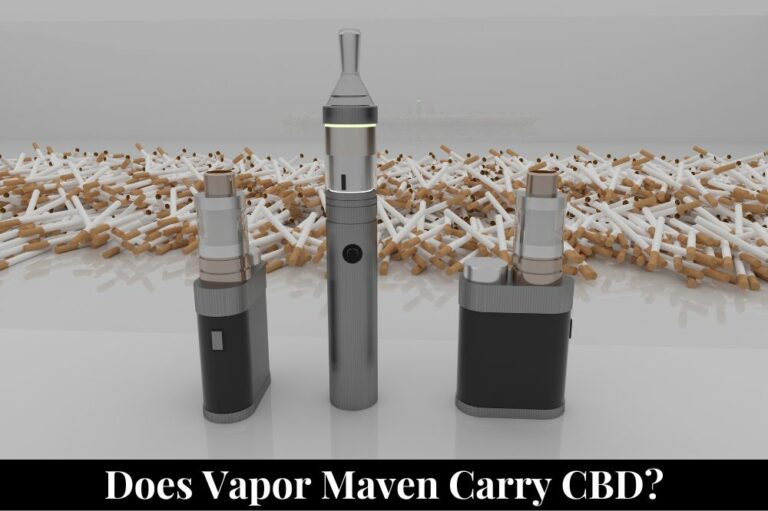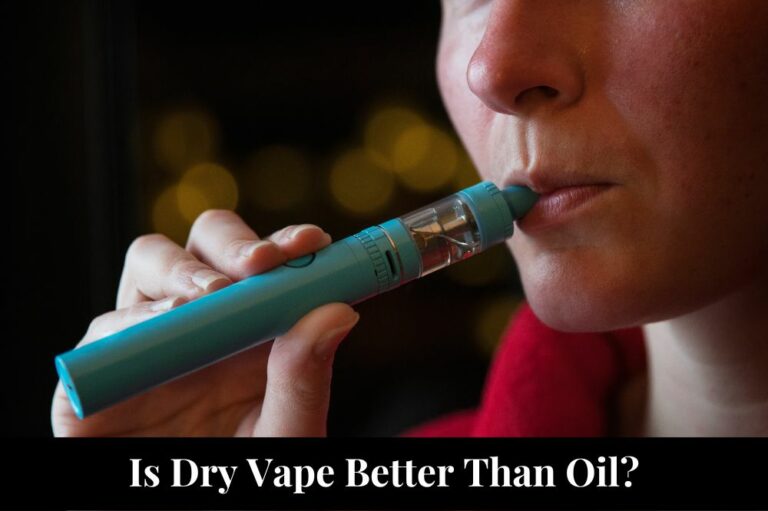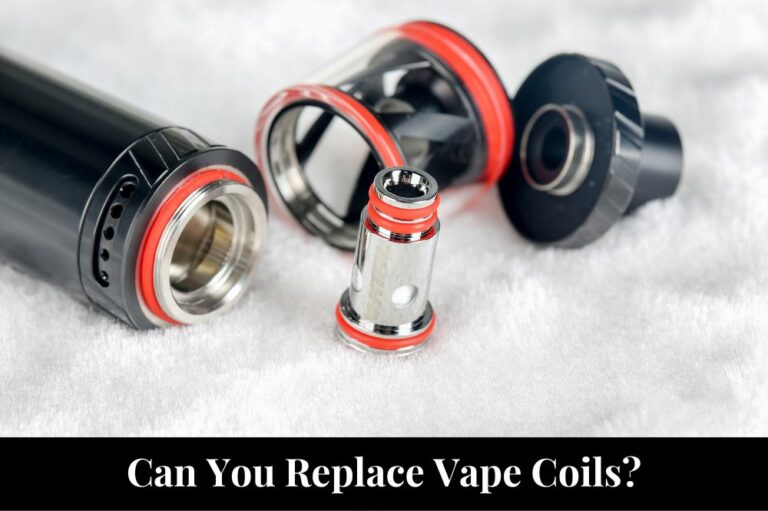
Are you curious about whether or not vaping can be a healthy alternative to smoking? While vaping has been touted as a safer alternative to smoking, there is still much debate about whether or not it is truly a healthy choice. While many vapers claim that it has helped them quit smoking and improved their overall health, there are still concerns about the long-term effects of vaping on the body.
One of the biggest concerns about vaping is the potential negative effects of nicotine on the body. Nicotine is highly addictive and can have negative health effects on both the cardiovascular and respiratory systems. However, there are nicotine-free vape options available that may be a healthier alternative. These types of vapes are typically made with vegetable glycerin or propylene glycol, both of which are considered safe for consumption by the FDA. In addition, there are also vape options that contain natural ingredients such as essential oils or vitamins.
Understanding Vaping
Vaping is the act of inhaling vapor produced by an electronic cigarette or other vaping device. The vapor is created by heating a liquid, known as e-juice or vape juice, which typically contains nicotine, flavorings, and other chemicals. While vaping is often promoted as a safer alternative to smoking, it is still not entirely risk-free.
When you inhale the vapor from a vaping device, the nicotine and other chemicals are absorbed into your bloodstream through your lungs. Nicotine is highly addictive and can have negative effects on your cardiovascular system, including increasing your heart rate and blood pressure. Additionally, some flavorings and chemicals used in e-juice have been linked to respiratory problems and other health issues.
It’s important to note that not all vaping devices and e-juices are created equal. Some devices, such as pod systems, are designed to deliver higher levels of nicotine, while others, such as sub-ohm tanks, are better suited for lower nicotine levels. Similarly, some e-juices are made with higher-quality ingredients and are less likely to contain harmful chemicals.
If you are considering vaping, it’s important to do your research and choose a device and e-juice that are right for you. You should also be aware of the potential risks and take steps to minimize your exposure to harmful chemicals. This may include choosing e-juices that are free of diacetyl, acetyl propionyl, and other harmful chemicals, as well as using devices that are designed to minimize the production of harmful byproducts.
The Concept of Healthy Vaping
Vaping has become incredibly popular in recent years as an alternative to conventional smoking. However, there is still a lot of debate around the concept of “healthy vaping.” While vaping may be less harmful than smoking, it’s still not considered safe. Here are a few things to keep in mind:
SPIRITBAR Katana BP10000
- Slender, leather-textured body reminiscent of a katana handle for an authentic samurai feel
- Unique samurai-inspired e-liquid flavor - fruity yet not too sweet, with a luxurious, elegant aroma
- Powerful 650mAh rechargeable battery for extended vaping time
- Large 18ml e-liquid capacity and 10,000 puff capacity
- Advanced mesh coil and e-liquid & power display screens for optimal vaping experience
The special juice captures the essence of the samurai spirit with its rich, smoothly pulsating flavor that brings new satisfaction with every puff. The device's slender, leather-textured design evokes the grip of a samurai's katana, making this product a perfect choice for beginner vapors.
- Potential Risks and Controversies: While vaping may not have the same level of risks as smoking, there are still potential dangers associated with it. The aerosol created by vaping contains nicotine, flavorings, and other chemicals that can be harmful to your health. Additionally, there have been incidents of batteries in vaping devices exploding and causing harm.
- Understanding Vaping Benefits of Healthy Vaping: One of the main benefits of vaping is that it can help people quit smoking. Vaping can also be a way to enjoy the sensation of smoking without the harmful effects of tobacco. However, it’s important to note that vaping is not a completely safe alternative to smoking.
- Responsible Vaping Practices: To minimize the risks associated with vaping, it’s important to practice responsible vaping. This includes using high-quality vaping devices, avoiding homemade or modified devices, and using e-liquids that are free of harmful chemicals. It’s also important to follow the manufacturer’s instructions for using and maintaining your vaping device.
- PROS and CONS of Healthy Vape: While there are some potential benefits to vaping, there are also some drawbacks. Some people may experience side effects such as coughing, throat irritation, and dry mouth. Additionally, vaping can be expensive, and the long-term health effects of vaping are still unknown.
In conclusion, while vaping may be a less harmful alternative to smoking, it’s still not considered safe. It’s important to understand the potential risks and controversies associated with vaping and to practice responsible vaping to minimize these risks.
Potential Health Benefits
Vaping has become a popular alternative to smoking, and there are potential health benefits associated with it. Here are a few:
Reduced Toxin Exposure
Traditional cigarettes contain thousands of chemicals, many of which are toxic and can cause cancer. Vaping, on the other hand, does not involve combustion, which means that there is no smoke or ash. Instead, e-cigarettes heat nicotine, flavorings, and other chemicals to create an aerosol that you inhale. While e-cigarettes are not completely risk-free, they are believed to be less harmful than traditional cigarettes. According to a review by Public Health England, smoking e-cigarettes instead of tobacco cigarettes has many benefits – it improves the quit-success ratio over time, and it is 95% less harmful than smoking.
Assisting in Smoking Cessation
Many people use vaping as a way to quit smoking. E-cigarettes can deliver nicotine in a way that is less harmful than traditional cigarettes, and they can also help people gradually reduce their nicotine intake. Some studies have shown that e-cigarettes can be an effective tool for smoking cessation, although more research is needed to confirm this.
SPIRITBAR Jack’s Flask 9000 Puffs
- Stylish pirate flask-shaped body providing an exciting vaping experience
- Delivering up to 9000 puffs per device
- 20ml e-liquid capacity with 50mg nicotine strength for satisfying throat hit
- Specialized pirate-themed e-juice flavors for rich, swirling taste
- Premium mesh coil optimizes flavor profile for maximum vaping enjoyment
This disposable vape captures the daring spirit of the high seas with its flask styling and signature pirate e-juice flavors. The extraordinary battery life provides 9000 indulgent puffs for extended vaping pleasure. Live boldly and freely with the Jack's Flask - a legendary vaping experience fit for a pirate's adventures.
It’s important to note that while vaping may have potential health benefits, it is not risk-free. Nicotine is still an addictive substance, and e-cigarettes can have other harmful chemicals besides nicotine. Additionally, there is concern about the long-term effects of vaping on lung health. If you are considering vaping as a way to quit smoking, it’s important to talk to your doctor and get personalized advice.
Potential Health Risks
While vaping is often marketed as a safer alternative to smoking, it still poses potential health risks. Here are some of the most significant risks associated with vaping:
Addiction
One of the most significant concerns with vaping is addiction. E-cigarettes contain nicotine, which is highly addictive. Nicotine can cause changes in the brain that lead to addiction, making it difficult to quit once you start. In fact, studies have shown that it may be harder to quit a nicotine addiction than a heroin addiction [Mayo Clinic Health System].
Lung Damage
Vaping can also cause lung damage. When you inhale the aerosol produced by e-cigarettes, you expose your lungs to a variety of chemicals, including nicotine, flavorants, and other ingredients that are added to vaping liquids. Some of these chemicals can be harmful to your lungs, potentially leading to lung inflammation and damage [NIH News in Health].
Heart Conditions
Recent studies have found that vaping can increase the risk of heart conditions. Harmful substances in many vaping products could increase the risk of heart attack and chronic obstructive pulmonary disease (COPD), especially among teens and young adults [Verywell Health].
It’s important to note that the long-term health effects of vaping are still unknown, as e-cigarettes are a relatively new product. While vaping may be less harmful than smoking, it’s still not a safe alternative. If you’re concerned about your health, it’s best to avoid vaping altogether.
Comparing Vaping to Traditional Smoking
When it comes to comparing vaping to traditional smoking, it’s important to note that while vaping may be less harmful than smoking, it’s still not entirely safe. According to the American Heart Association, vaping is not a safe or healthy alternative to smoking. However, many people believe that vaping is safer than smoking, but this is not necessarily the case.
One of the main reasons that vaping is considered less harmful than smoking is that e-cigarettes do not contain tobacco, which is the primary cause of many of the health problems associated with smoking. Additionally, e-cigarettes do not produce tar, carbon monoxide, or many of the other harmful chemicals found in tobacco smoke.
However, e-cigarettes do contain nicotine, which is an addictive substance that can have negative health effects. While nicotine itself is not necessarily harmful, it can cause increased heart rate, high blood pressure, and other cardiovascular problems.
Furthermore, the long-term health effects of e-cigarettes are not well understood yet. While many experts agree that compared with smoking, vaping is less dangerous to health, it is not a safe alternative and should not be promoted as such. Vaping and respiratory health is still a topic of research.
SPIRITBAR Katana BP10000
- Slender, leather-textured body reminiscent of a katana handle for an authentic samurai feel
- Unique samurai-inspired e-liquid flavor - fruity yet not too sweet, with a luxurious, elegant aroma
- Powerful 650mAh rechargeable battery for extended vaping time
- Large 18ml e-liquid capacity and 10,000 puff capacity
- Advanced mesh coil and e-liquid & power display screens for optimal vaping experience
The special juice captures the essence of the samurai spirit with its rich, smoothly pulsating flavor that brings new satisfaction with every puff. The device's slender, leather-textured design evokes the grip of a samurai's katana, making this product a perfect choice for beginner vapors.
Overall, while vaping may be less harmful than smoking, it’s important to remember that it is not entirely safe. If you are considering using e-cigarettes as a way to quit smoking, it’s important to talk to your doctor and explore all of your options.
Regulations and Safety Measures
When it comes to vaping, regulations and safety measures are in place to ensure that users are protected from potential harm. The Food and Drug Administration (FDA) is responsible for regulating electronic nicotine delivery systems (ENDS), which includes e-cigarettes.
One of the main regulations put in place by the FDA is the minimum sales age law, which restricts the sale of e-cigarettes to adolescents. This is an important measure to prevent vaping among young people, as studies have shown that vaping can have negative effects on brain development.
Additionally, the FDA has banned the sale of flavored e-cigarettes, with the exception of menthol and tobacco flavors. This is because flavored e-cigarettes are often marketed towards young people and can be more appealing to them.
Manufacturers of e-cigarettes are also required to submit their products to the FDA for review. This includes information on the ingredients used in the e-liquid, as well as the device itself. This review process helps to ensure that the products are safe for consumers to use.
In terms of safety measures, it is important for users to follow the instructions provided by the manufacturer. This includes properly charging the device, using the correct type of battery, and not modifying the device in any way.
It is also recommended to use e-liquids that have been tested and are known to be safe. Some e-liquids may contain harmful chemicals, so it is important to do your research and choose a reputable brand.
Overall, while there are still some risks associated with vaping, regulations and safety measures are in place to help protect users. By following these guidelines and using caution when vaping, you can minimize your risk of harm.
The Role of Nicotine
Nicotine is a highly addictive substance found in both cigarettes and e-cigarettes. While it is true that nicotine alone is not carcinogenic, it can have harmful effects on the body. According to the National Institute on Drug Abuse, nicotine can lead to addiction, which is why so many people who smoke or vape find it difficult to quit.
In addition to addiction, nicotine can have other negative health effects. For example, it can cause an increase in heart rate and blood pressure, which can put additional strain on the cardiovascular system. Nicotine can also affect brain development in adolescents, potentially leading to long-term cognitive and behavioral problems.
It is important to note that not all e-cigarettes contain nicotine. Some e-liquids are nicotine-free, which can be a good option for people who are trying to quit smoking or vaping altogether. However, even nicotine-free e-cigarettes can contain other harmful chemicals, such as heavy metals and flavorings, which can damage the lining of the lungs.
If you do choose to use e-cigarettes, it is important to be aware of the potential risks associated with nicotine. If you are trying to quit smoking or vaping, there are many resources available to help you quit, including nicotine replacement therapy and counseling.
Vaping and the Youth
Vaping has become increasingly popular among young people in recent years. According to a study released by the U.S. Food and Drug Administration and the U.S. Centers for Disease Control and Prevention (CDC), more than 2.5 million U.S. middle and high school students reported current e-cigarette use in 2022, which includes 14.1% of high school students and 3.3% of middle school students.
Youth who vape are 6.8 times more likely to start smoking cigarettes within 18 months compared to non-e-cigarette users. Additionally, vaping increases the frequency of cigarette smoking in past 30 day use for those who are experimenting with traditional cigarettes. This is a major concern as smoking is a leading cause of preventable death worldwide.
It is important for parents and educators to educate young people about the dangers of vaping and smoking. Restricting access to e-cigarettes and other vaping devices is one way to prevent youth from starting to vape. Additionally, regulatory initiatives that ban youth-focused marketing efforts have helped curb vaping’s appeal to young people.
Conducting media campaigns that highlight the dangers of vaping and smoking can also be effective in preventing young people from starting to vape. By providing accurate information and resources, young people can make informed decisions about their health and well-being.
Future Research on Vaping
While vaping is generally considered to be a less harmful alternative to smoking traditional cigarettes, there is still much that is unknown about the long-term effects of vaping on human health. As the popularity of vaping continues to grow, it is important to continue studying the potential health risks associated with this practice.
One area of future research on vaping is the impact of e-cigarettes on lung health. While some studies have suggested that vaping is less harmful to the lungs than smoking traditional cigarettes, other research has shown that vaping can still cause lung damage and inflammation. More research is needed to determine the long-term effects of vaping on lung health, particularly in individuals who use e-cigarettes regularly over a period of years.
Another area of future research on vaping is the potential impact of e-cigarettes on cardiovascular health. Studies have shown that vaping can increase heart rate and blood pressure, and may also increase the risk of heart disease. However, more research is needed to fully understand the relationship between vaping and cardiovascular health, particularly in individuals who use e-cigarettes over a long period of time.
Finally, future research on vaping should also focus on the potential impact of e-cigarettes on mental health. While some studies have suggested that vaping may be helpful for individuals who are trying to quit smoking, other research has shown that vaping can be addictive and may increase symptoms of anxiety and depression. More research is needed to fully understand the impact of vaping on mental health, particularly in individuals who use e-cigarettes regularly.
Overall, while vaping may be a less harmful alternative to smoking traditional cigarettes, there is still much that is unknown about the potential health risks associated with this practice. Continued research is needed to fully understand the long-term effects of vaping on human health, and to develop effective strategies for minimizing the potential risks associated with this practice.








